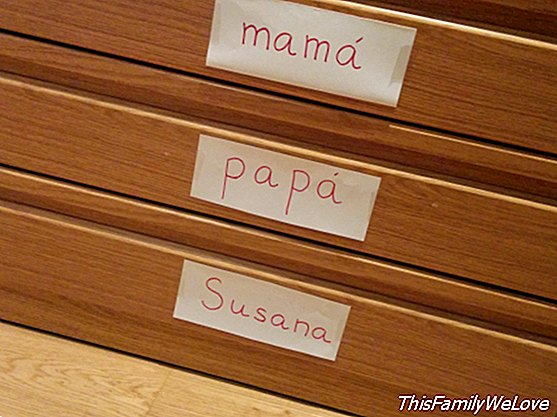Pre-reading: guidelines for developing the ability to read
The first school situation in which children are subjected to pressure is learning to read. At the age of seven all children are ready to learn to read, but at age 4, which is the traditional age in Spanish schools to begin with vowels, not all have the necessary degree of maturity. However, it is possible to initiate children inthe pre-reading with guidelines to develop the ability to read.
At four years, children are at a stage where other skills are more fundamental, such as psychomotricity, socialization or symbolic play, and magical thinking has more presence in them than logic.
Learn to read: are you ready?
So that children candevelop the ability to read and reading comprehension combine factors of very different orders:
1. Physiological such as lateralization, vision and hearing, which are developed thanks to motor and sensory activities.
2. Psychological as the acquisition of a good corporal outline and spatial orientation.
3. Cognitive as symbolization and conceptualization.
4. Emotional as the motivation.
5. Environmental as the presence of written stimuli.
For this reason, there are countries such as Finland or pedagogical systems such as Waldorf that do not present reading until they are 7 years old, and instead they multiply the opportunities to experience sensations, to explore space and movement, to learn by intrinsic gratification, and enrich the environment
Pre-reading: how to develop the ability to read
The pre-reading It is a process that aims to develop the ability to read of children through motivation through the prepared environment. It involves choosing within the home a place where objects of each of the family members are kept. They can be drawers, cobblers ... If you do not have anything similar you can think, for example, a cup to drink water or the place where the toothbrush is hung. The important thing is that it is a fixed location and that the content clearly belongs to each member of the family.

In these locations we will place a sign with the name of the person to whom it belongs, with special importance "dad", "mom" and the name of the child. The choice of words is affective and cognitive.
1. In the affective aspect, the proper noun, the initial of the proper name and "mama" and "papa" are the words with the greatest positive affective charge. Imagine a drawer full of initials, will not we feel, seeing the name, what is "our"?
As for the mystery of written words, let's put ourselves in the egocentric point of view of a three-year-old child (a little less than ours). What does a child feel when he / she learns that this gibberish is his / her "name", that is, the most important word in his / her world? Undoubtedly they are the most attractive letters and words to awaken the curiosity of the child.
2. In the cognitive aspect, "Dad" and "Mom" have a series of unique characteristics. The syllabic consciousness is prior to phonetics, so presenting words with repeated syllables is the simplest stimulus of syllabic awareness. But in addition they are two words that repeat the vowel and change the consonant, so it facilitates the phonetic awareness, more difficult to acquire. Joined to the syllables and letters of the child's name, they will be a perfect set for initiation.
The characteristics of the posters for pre-reading
Neuroscience has confirmed that clarity in perception facilitates cognitive processing. That is why when writing, looking for maximum clarity, we will use large and thick letters with the maximum contrast, in red on white or in black on white.
In addition, the letters must be an English model, that is, calligraphic and separated. Calligraphic means as similar as possible to the letters you will first learn to read and write. And separated to facilitate the identification of graphemes, which in the letter spun becomes more complex.
Once our son has already been interested in the house signs and seems to recognize the letters, if we want to go a little further, we can add the letter "o", which is round like our mouth, and the "s" that is wavy like a snake, which are the two most intuitive letters because they are almost pictographic. We can teach them by pronouncing them and drawing them while making the corresponding movement with our body and hands: the "o" running through the circle of our mouth and the "s" drawing in the air with our hands. By combining these letters our son will be able to read many words and will have reached a very high level of abstraction, in addition to symbolism.
If you achieve this, do not hesitate: once you have learned the correspondence between a sound and a drawing and between a series of symbols and a concept, you will have no difficulty in learning how many letters the alphabet has and how to read comprehensively.
We wish you good luck in the experience and a lot of amazement when your child lives the miracle of learning to read, whatever age it may be.
Elena Furnace Educational Innovation Consultant. Founder of Crianza Con Sentido and of the little school of Arturo Soria.




